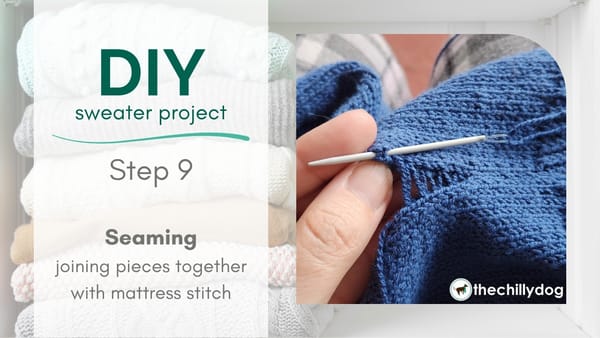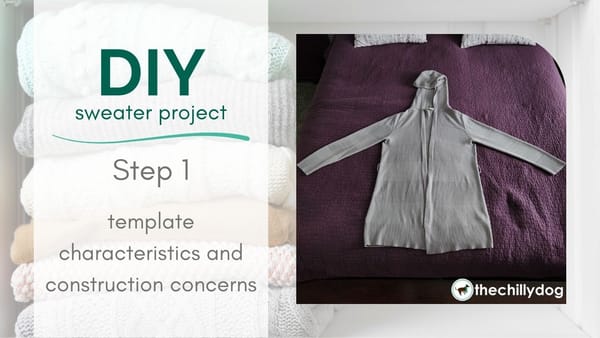
Make a list of template characteristics and construction concerns
I've chosen the sweater I'll be using as a template for my patternless, from-scratch sweater project. Before I can start knitting, or even choose my yarn and needles, I am going to take some time to carefully look at my template. I want to notice how it was constructed, identify the elements I want to keep/change and start thinking about potential knitting and shaping concerns.
Make a list of at least 20 design elements
In some ways, because I'm using an existing sweater as a template, I'm sort of reverse engineering how it was constructed. It's like solving a mystery. Before I take any measurements, I want to notice as many different characteristics about my template sweater as possible, both things I like and things that can be improved.
I think this step is easiest to do with the sweater laying on a flat surface so I can look at it inside and out.
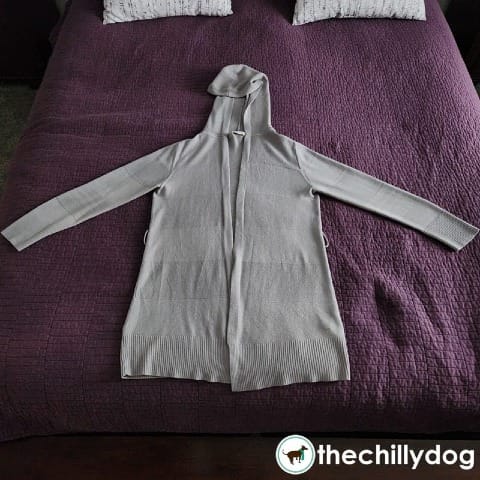
Template Characteristics and Concerns
- neutral color
- knit with very fine yarn/thread
- moderately drapey fabric
- worked in pieces with machine-sewn seams
- subtle striping pattern
- long, ribbed cuffs and body bottom
- hemmed (or maybe double knit?) band around front and hood
- loops for belted closure
- no buttons
- body flares slightly and is not rectangular
- fronts overlap below belt loops
- front pieces are also not rectangular
- fronts are longer than the back
- narrow, rounded, crew-like neckline
- hood constructed in 2 pieces and machine seamed
- flat, enclosed seam where hood attaches to body
- shoulder top slants slightly
- awkward, pointed connection where sleeve-top attaches to shoulder seam
- rounded sleeve cap shaping
- striping pattern of sleeve cap aligns with body striping

After trying on my sweater one more time I also notice two aspects of the size/shape I would like to adjust to better suit my needs.
- slightly longer sleeves
- slightly deeper or wider sleeve opening
Decide how to address each design element
Now I'm going to review my list and make notes about how I plan to incorporate, eliminate or improve upon each element.
neutral color - I like the neutral color and will probably choose to knit in another neutral. Maybe black, navy, or a different shade of tan/gray.
knit with very fine yarn/thread - I like the look of the fine thread, but prefer knitting with a sock to sport weight yarn.
moderately drapey fabric - To get a nice drape with a thicker yarn I will likely need a looser tension than recommended on the yarn ball band. I may need to swatch with multiple needle sizes.
worked in pieces with machine-sewn seams - I like the structure of pieced sweater. However, because my fabric will be thicker, I'll do a more traditional hand-join with yarn.
subtle striping pattern - I don't want to knit the entire sweater in stockinette and would like a subtle stitch pattern, but maybe not stripes. I'll look through my stitch dictionaries (listed below) for some ideas and swatch a few as I swatch different yarns and gauges.
long, ribbed cuffs and body bottom - I like the ribbing, but since I'm working with thicker yarn I'll also audition different rib structures when I swatch
hemmed (or maybe double knit?) band around front and hood - Rather than doing a hemmed or double knit band, it would be easier for me to do an applied band that is attached after the sweater is complete.
loops for belted closure, no buttons - I don't ever wear the belt, so no need for belt loops. However, I frequently use a shawl pin to keep the front closed. Maybe a single button or hook and eye closure would be a good choice.
body flares slightly and is not rectangular, fronts overlap below belt loops, front pieces are also not rectangular - These are all things to remember when I make measurements and am sketching out the shaping
fronts are longer than the back - I think this is due to wear not because of the original construction
narrow, rounded, crew-like neckline - If I choose to not include a hood (I'm still on the fence about this choice) I will need to modify the neckline
hood constructed in 2 pieces and machine seamed - If I do include a hood, a single piece would be prettier.
flat, enclosed seam where hood attaches to body - This is very neat, but if I do make a hood I will join it with yarn rather than a sewn seam.
shoulder top slants slightly - Something to remember when sketching and measuring.
awkward, pointed connection where sleeve-top attaches to shoulder seam - I think this happened because of the machine-sewn seams and is not related to the shape of the sleeve cap.
rounded sleeve cap shaping - When sketching and taking measurements remember that armholes on the body curve in at about the same rate as the sleeve cap.
striping pattern of sleeve cap aligns with body striping - I never noticed this before, but it's good design and craftsmanship.
slightly longer sleeves, slightly deeper or wider sleeve opening - I'll need to adjust the sleeve cap and armhole openings when I measure and sketch out my design.
Stitch dictionaries on my bookshelf
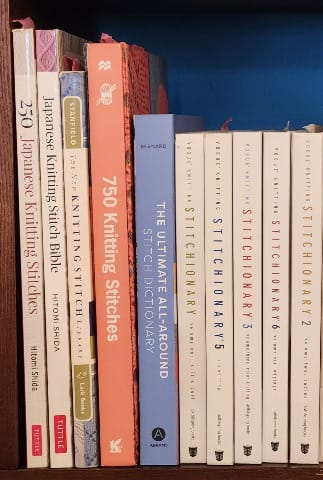
- 250 Japanese Knitting Stitches by Hitomi Shida
- Japanese Knitting Stitch Bible by Hitomi Shida
- The New Knitting Stitch Library by Lesley Stanfield
- 750 Knitting Stitches published by St. Martin's Griffin
- The Ultimate All-Around Stitch Dictionary by Wendy Bernard
- Vogue Knitting Stitchionary Volumes 1-3, 5-6
In the next step
Get ready to measure and sketch out a rough draft of your template sweater.
Finally, if you are designing and knitting along with me let me know the most interesting (or worriesome) element you identified in your template.
Join the conversation
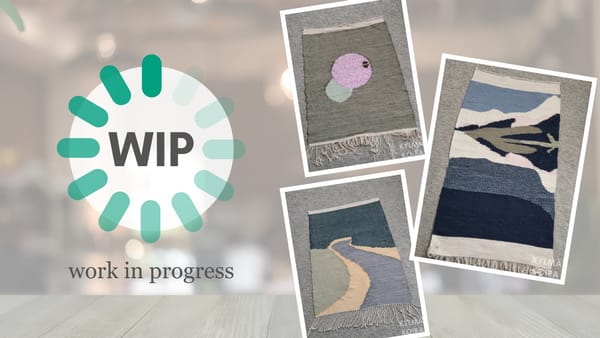
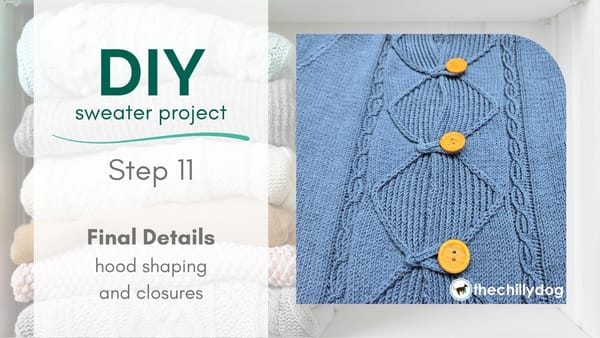
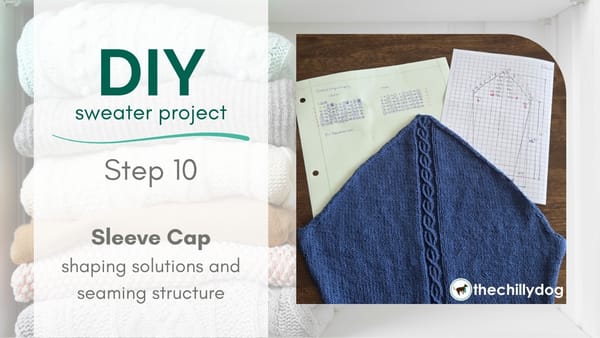
Design it Yourself Sweater Project | Step 10
